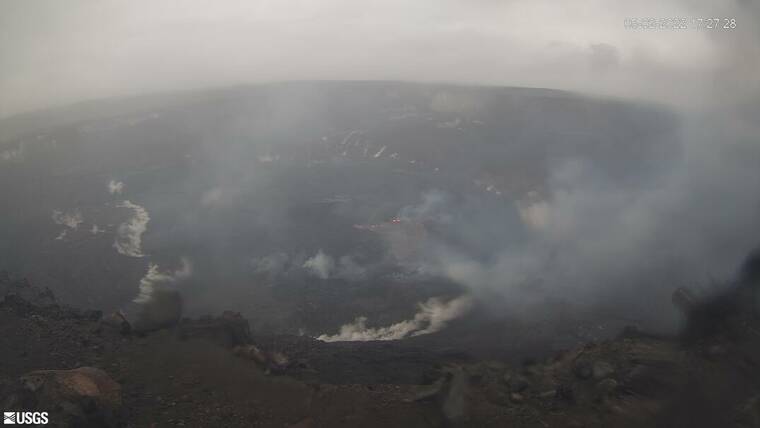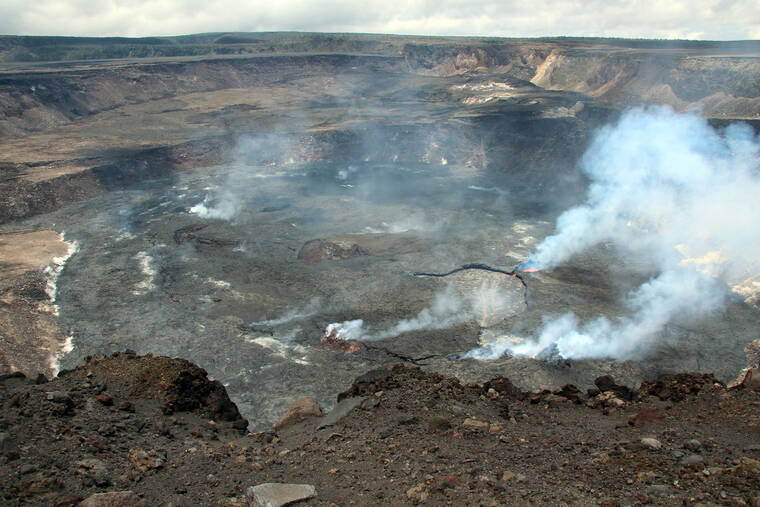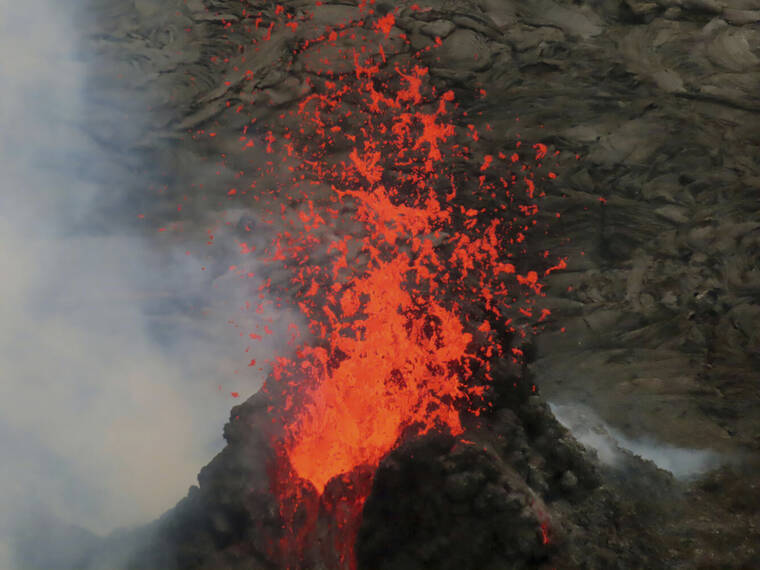Kilauea Volcano lava flow steady after starts and stops
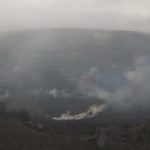
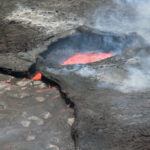
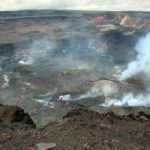
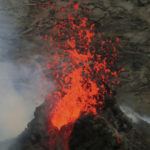
HONOLULU — Kilauea Volcano is now erupting a steady stream of lava after a period of intermittent pulsing.
The latest eruption began in September but until recently had been stopping and starting every few days, the Honolulu Star-Advertiser reported Monday.
Now the pulsing nature of the eruption has ended and a steady flow of lava is once again filling the volcano’s Halema‘uma‘u Crater in Hawaii Volcanoes National Park. The flow has been nonstop for more than two weeks.
Scientists with the U.S. Geological Survey said that while the volcano is ultimately unpredictable, the current activity shows no signs of slowing and some historic eruptions have lasted decades.
“It could go on for quite some time,” said Ken Hon, scientist in charge of the Hawaiian Volcano Observatory. “For now it is reestablishing its conduits in the summit area.”
A lava lake more than 300 feet deep has formed in Halema‘uma‘u Crater since the start of the latest eruption.
There was another brief eruption in the crater that began in 2020 and lasted for several months. It was the first since a major 2018 eruption caused parts of the summit to collapse and massive amounts of lava to flow into Big Island neighborhoods.
Halemaumau Crater has long been home to massive eruptions. The 2018 eruption drained all the lava from the summit lake that had been active there for years.
“It’s an exciting time for volcano watchers,” said Ken Rubin, University of Hawaii professor of earth sciences.
“It’s interesting to watch the pulse of the volcano,” Rubin said, “because although most of it is predictable or understandable by us after the fact, it doesn’t mean we’re able to fully explain every aspect that’s happening there in real time.”
The eruption is within view from some areas of Hawaii Volcanoes National Park, but officials say weather and time of day can change the visibility.
“There are more visitors, and the active volcano is one of the reasons,” said Jody Anastasio, acting public information officer for Hawaii Volcanoes National Park.
To avoid crowds, Anastasio suggests visiting during late night or early morning hours when the glow of the lava lake can be seen from afar and fewer people are in the park.

